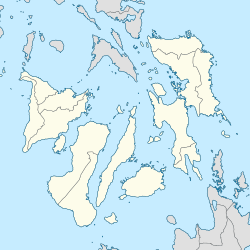History
The Lacson Ruins, located on a vast 440-hectare sugar plantation in Talisay, Negros Occidental, is the ancestral mansion of Don Mariano Lacson, a wealthy sugar businessman of the prominent Lacson clan.
Don Mariano Lacson is also the brother of several notable figures, including Gen. Aniceto Lacson, a Negrense revolutionary general and president of the Cantonal Republic of Negros, Rosendo Lacson, a signatory to Aniceto’s Cantonal Republic of Negros, and industrialist Domingo Lacson Sr., who founded Sta. Clara Estate Inc.
The mansion was constructed in the early 1900s in memory of his late wife, Maria Braga Lacson, who died while giving birth to their eighth child.
During World War II, Filipino guerrillas took decisive action to prevent Japanese forces from using the mansion as a military headquarters. They set the mansion ablaze, and the fire raged for three days, reducing it to ruins. Despite the extensive damage, the foundations remained intact.
For generations, Lacson's heirs consistently maintained the property, valuing its sentimental significance, especially in memory of his wife. Today, the Lacson Ruins is considered to be one of the most iconic architectural landmarks of the Philippines, symbolizing both historical resilience and personal legacy.
Current status
Known variously as the "Taj Mahal of Talisay", "Taj Mahal of Negros" and "Taj Mahal of the Philippines", it is in the private ownership of the descendants of Don Mariano Ledesma Lacson and Cora Maria Osorio Rosa-Braga. They have preserved it in its ruined state, among operational farmland, as a tourist attraction that can be visited for a fee or hired for events. It is open to daily visitors from 8am to 8pm for an entrance fee of PHP150 for adults, PHP100 for senior citizens or PWD, PHP 80 for students and free for children. The fee is PHP1000 for those who will take photoshoots. [1]
This page is based on this
Wikipedia article Text is available under the
CC BY-SA 4.0 license; additional terms may apply.
Images, videos and audio are available under their respective licenses.






